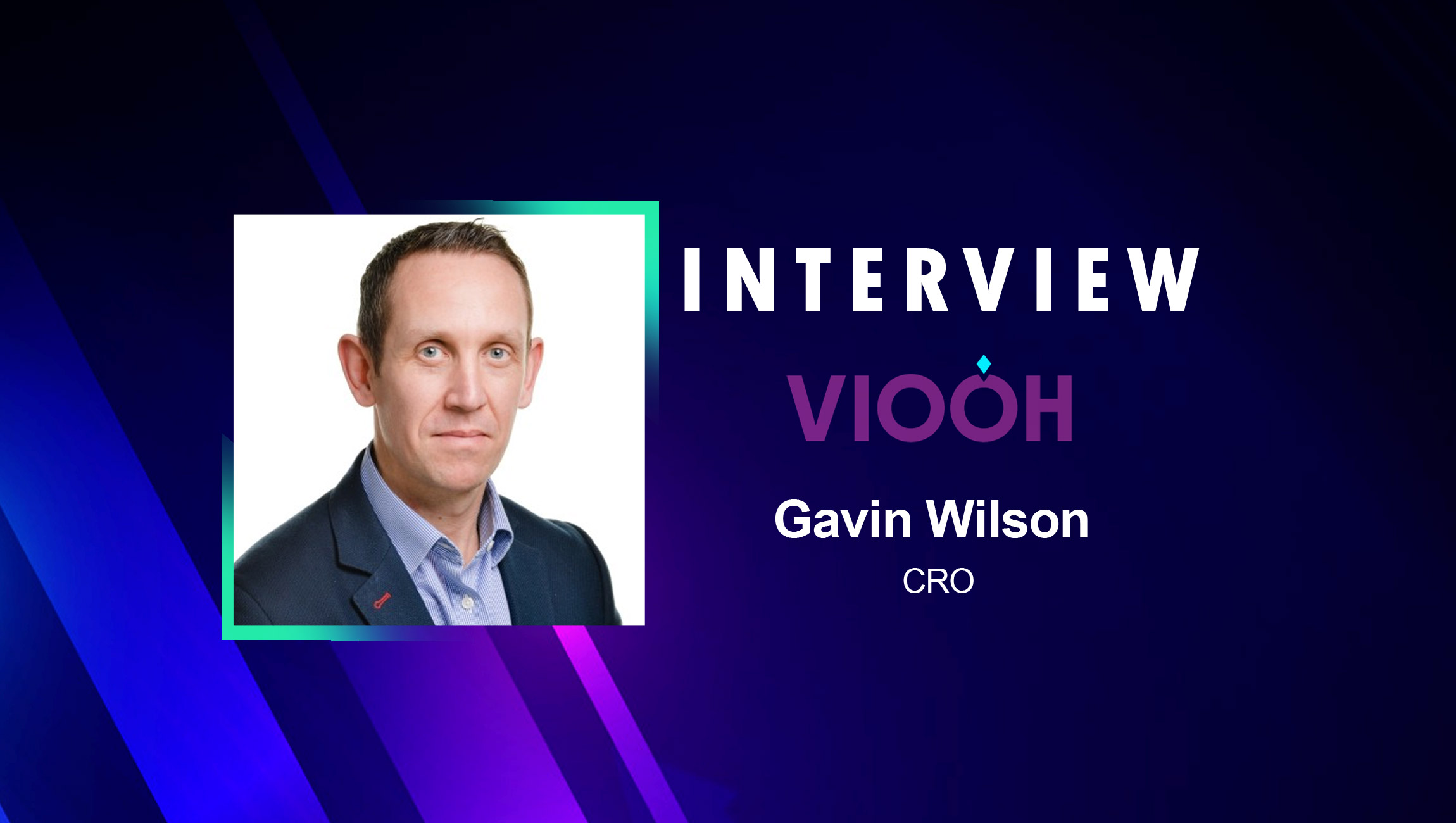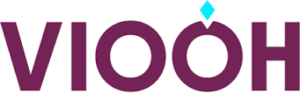SalesTechStar Interview with Gavin Wilson, Chief Revenue Officer at VIOOH

Gavin Wilson, Chief Revenue Officer at VIOOH chats about the various ways in which brands can optimize their OOH media processes to gain more traction from their overall OOH spends in 2021:
____
Hi Gavin, welcome to SalesTechStar! We’d love to hear about your journey in tech through the years and your role at VIOOH…what’s a typical day at work like now in the new normal?
Given programmatic is a relatively young industry, I’m someone who’s lucky enough to have been at the front of this evolution for some time. I joined German DSP Sociomantic Labs as UK Managing Director back in 2012, launching the business in this market before taking over the management of Northern and Southern Europe less than two years later. By 2017 I was Global Chief Revenue Officer and a year later oversaw the integration of the entire business into dunnhumby, the customer data science leaders.
Read More: SalesTechStar Interview With Denis Murphy, Chief Revenue Officer At Couchbase
I joined VIOOH as Chief Revenue Officer in March 2020 – just as the country went into lockdown – so I didn’t meet my full team face-to-face until after the first lockdown ended. That was an unusual start to a job but we’ve all got used to the new way of working, implementing all the usual channels – Zoom, Google Hangouts, Microsoft Teams, Slack and so on. While it’s not ideal, I’m very relaxed about working like this as I think it gives people the opportunity to work to their preferred routine. I want my team to prioritise their physical and mental wellbeing, so if that means they want to take a call while out for a walk, then that works for me. Everyone works differently and it’s really important we support our teams’ needs in these strange times
The VIOOH Leadership Team has a daily scramble each morning, when we gather for 15 minutes on the phone and share updates, resolve any issues and generally catch up. And of course there’s the company socials, from wine tasting to painting to quizzes – all online – that lets everyone interact on a more informal level.
How have you seen the programmatic marketplace evolve this year during the pandemic and what are your top predictions for 2021?
Effective advertising relies on consumer behavior insights but at a time when our habits have completely altered, and there remains so much uncertainty from one week to the next around how we will be spending our time, many marketing strategies have been thrown into chaos. Media agencies are having to rethink their media plans and brands are having to be much more fluid and agile around where and when they speak to their audiences.
In that sense, programmatic is arguably the most reliable and efficient way to reach people, particularly when it comes to out of home advertising. The ability to turn up investment across channels is a welcome element for marketers, and programmatically-traded ad space is bought and sold in near real time and in response to exact criteria being met, so not a single penny of ad spend is wasted.
For obvious reasons, we haven’t seen many of the innovation budgets this year we’d ordinarily expect to see, where a brand will trial a channel and see how it works for their brand or for a specific campaign, but we expect that to pick up again in Q1 and Q2. We are seeing growth from new markets however and from clients who have utilised the channel successfully before. We’re also seeing lots more DSPs wanting to get connected to VIOOH in preparation for next year, something that would have happened sooner had COVID not happened, but which we are already seeing as people prime themselves for next year.
For teams redefining their overall advertising process and media for 2021; what are some of the best practices you’d share when it comes to evaluating measurable results?
One thing we’re seeing several brands do very well at the moment is use triggers to inform their programmatic OOH spend. A great example was in the case of a campaign for Renault’s electric car, the Renault Zoe, where programmatic adverts appeared only when certain emissions levels were reached in that environment.
Programmatic OOH can be a real one-to-many, mass messaging platform, or it can be more precise by using certain triggers or barometers. If you only show ads when certain conditions are met, you really are limiting wastage to a very effective degree.
What are some of the top thoughts you’d share for B2C / B2Bs who are thinking of exploring (or those who are enhancing) their out of home media plans for 2021?
This year we’ve seen many brands over-index on a lot of channels. When budgets shrink people tend to stick to a handful of tried and tested methods, but I would urge marketers going into 2021 to think about a true multichannel marketing mix and how programmatic out of home can be valuable in that funnel.
I would also urge anyone using OOH – either new or existing – to spend time considering the benefits of OOH as part of an omni-channel campaign. The rise of programmatically enabled digital OOH together with advanced mobile technology means brands can now use the two channels together to target audiences in a far more effective way than ever before. And as more and more digital OOH sites are traded programmatically the sheer volume of omni-channel opportunities will increase exponentially.
Lockdown has highlighted the advantages programmatic presents: real time mobile data allows ads to be traded based on exactly how many people fall within certain parameters – be it geography, demographic and so on – or are near a particular OOH site. By using that data effectively, OOH can once again trade on its position as an impactful, memorable, creatively powerful ad medium.
Read More: Smartly.Io Accelerates Growth In 2020, Empowering Brands To Scale Social Advertising
How according to you will new innovations in programmatic tools and adtech impact the way advertisers run campaigns in the near-future?
Programmatic’s power lies not just in its flexibility but in its ability to closely target – and re-target – consumers by accessing accurate data. Mobile phone data allows brands to know where people of different demographics are moving around when they’re out and about, and target them accordingly via not only solo programmatic digital OOH and with omni-channel campaigns. This coupled with local audience data companies like Route in the UK help to give precise understanding of audience levels, their movement and apply cross channel learnings as well.
Data will increasingly have an important part to play in the world of programmatic outdoor advertising. Buyers will likely expect more of their DSP, adding in more additional and value-adding data that offers more granularity and precision to each and every possible bid response. Data will become more of a common currency across the programmatic ecosystem of outdoor, similar to how it has added value across other media channels.
Can you talk about some innovative ways in which tech sales and marketing teams in B2B have gone against the tide during this downtime, to build brand presence and growth with their advertising media – some interesting campaigns you’ve come across?
There’s no denying there’s been some volatility in the advertising market this year, and OOH has arguably been one of the most affected as people were told to stay home, but we’ve seen advertisers respond in some really innovative ways. One example is the work done by Minor Figures, the alternative milk brand that is a specialist supplier to independent coffee shops. With their usual customers closed in lockdown, they changed their strategy to become a DTC brand, and used OOH to target people who they knew would be familiar with their brand, showing ads at sites around the vicinity of those coffee shops at times when their new audience would ordinarily have frequented the area. That kind of agility really shows off the ingenuity of brands under pressure, and the flexibility of OOH.
A few top tips you’d share with new sales reps and sales executives moving up the ladder in the midst of a downtime?
I have an approach that I always live by which is the Three Knows: know your industry inside out; know your client or audience base inside out; and Know the business you have either joined or are looking to join. Essentially, do due diligence on everything then you can get enthused about it and it helps you develop an opinion on anything and everything related to your job. People like to hear opinions, even if they disagree with them – it shows a deep interest in and understanding of your subject.
I would also encourage everyone to have a mentor. This is something I’ve seen offered more and more on LinkedIn as people struggle with the unusual circumstances of 2020, so go online and see who’s out there offering their services.
A parting thought on your biggest marketing or sales goof-up and the learning that came from it!
Much as I’d like to regale you with some hilarious or embarrassing tales of drunken antics, reply-all email errors or client meeting clangers, I’m afraid nothing really springs to mind! So I’m either very lucky or very boring!
Read More: SalesTechStar Interview With John Bruno, Vice President, Commerce Strategy At PROS
There’s more to B2B and Tech Marketing and Sales than meets the eye in 2021 and Beyond! Catch more here where leaders from Ness Digital, TeamViewer, JotForm, Xactly and others weigh in!
As Chief Revenue Officer at programmatic OOH marketplace VIOOH, Gavin works with DSP and agency partners to drive the broader engagement and growth strategy of the company as it expands into new territories. Prior to joining VIOOH Gavin was CRO at German DSP Sociomantic Labs, overseeing its integration into dunnhumby, for whom he went on to work as a Managing Director, Media.




